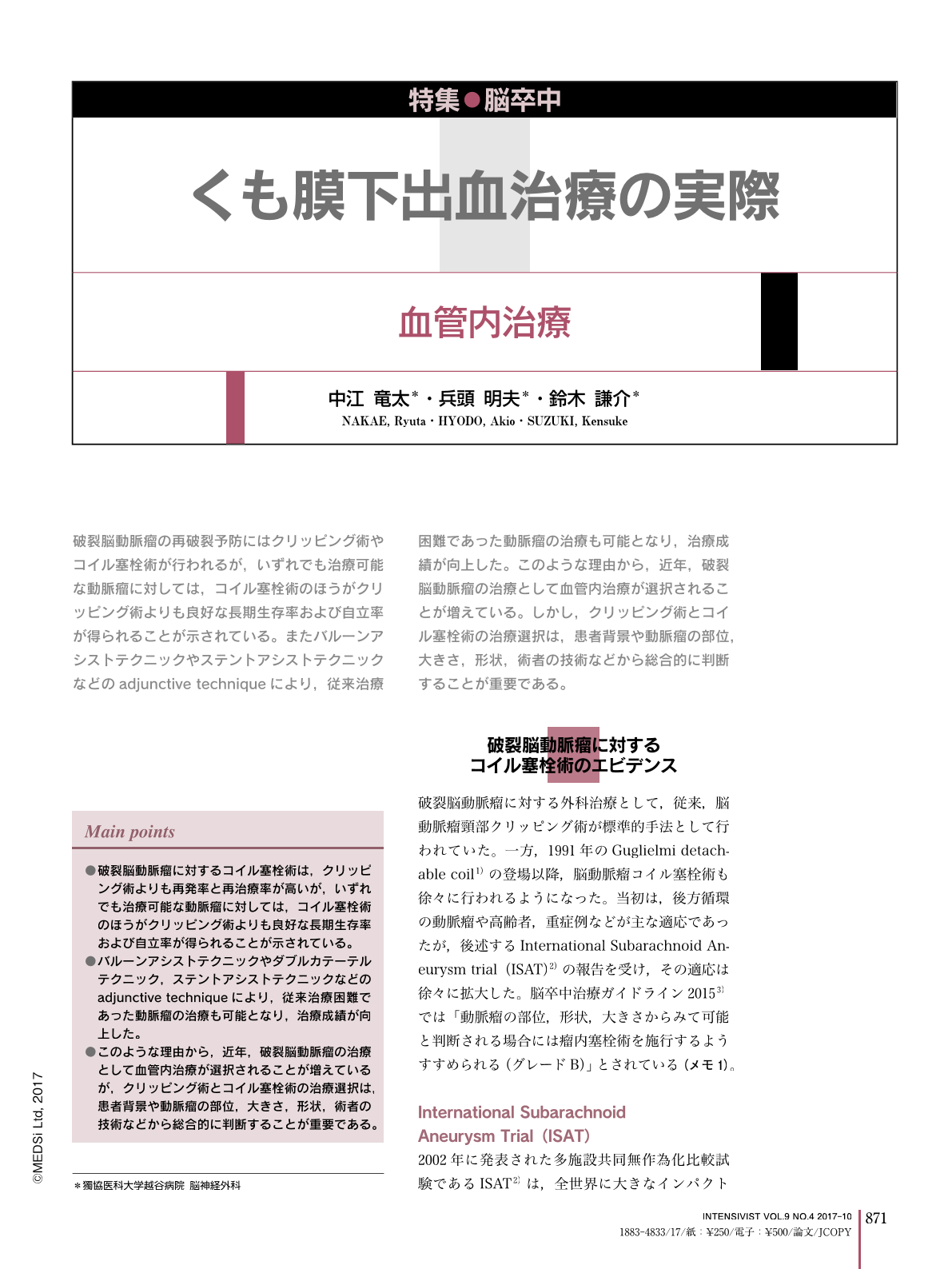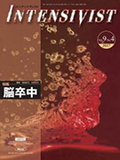Japanese
English
- 有料閲覧
- Abstract 文献概要
- 1ページ目 Look Inside
- 参考文献 Reference
破裂脳動脈瘤の再破裂予防にはクリッピング術やコイル塞栓術が行われるが,いずれでも治療可能な動脈瘤に対しては,コイル塞栓術のほうがクリッピング術よりも良好な長期生存率および自立率が得られることが示されている。またバルーンアシストテクニックやステントアシストテクニックなどのadjunctive techniqueにより,従来治療困難であった動脈瘤の治療も可能となり,治療成績が向上した。このような理由から,近年,破裂脳動脈瘤の治療として血管内治療が選択されることが増えている。しかし,クリッピング術とコイル塞栓術の治療選択は,患者背景や動脈瘤の部位,大きさ,形状,術者の技術などから総合的に判断することが重要である。
Main points
●破裂脳動脈瘤に対するコイル塞栓術は,クリッピング術よりも再発率と再治療率が高いが,いずれでも治療可能な動脈瘤に対しては,コイル塞栓術のほうがクリッピング術よりも良好な長期生存率および自立率が得られることが示されている。
●バルーンアシストテクニックやダブルカテーテルテクニック,ステントアシストテクニックなどのadjunctive techniqueにより,従来治療困難であった動脈瘤の治療も可能となり,治療成績が向上した。
●このような理由から,近年,破裂脳動脈瘤の治療として血管内治療が選択されることが増えているが,クリッピング術とコイル塞栓術の治療選択は,患者背景や動脈瘤の部位,大きさ,形状,術者の技術などから総合的に判断することが重要である。
Patients with a ruptured intracranial aneurysm eligible for either surgical clipping or endovascular coiling, have better long-term survival and independence rates achieved with endovascular coiling than with surgical clipping. Adjunctive techniques including balloon-assisted and stent-assisted techniques are effective for the endovascular treatment of aneurysms not treatable with conventional techniques alone, leading to improved outcomes. The use of endovascular coiling for ruptured aneurysms has been increasing over the years. However, patient demographics, location, size, and shape of aneurysms, and operator experience must be considered to make the optimal treatment choice of surgical clipping or endovascular coiling.

Copyright © 2017, MEDICAL SCIENCES INTERNATIONAL, LTD. All rights reserved.


